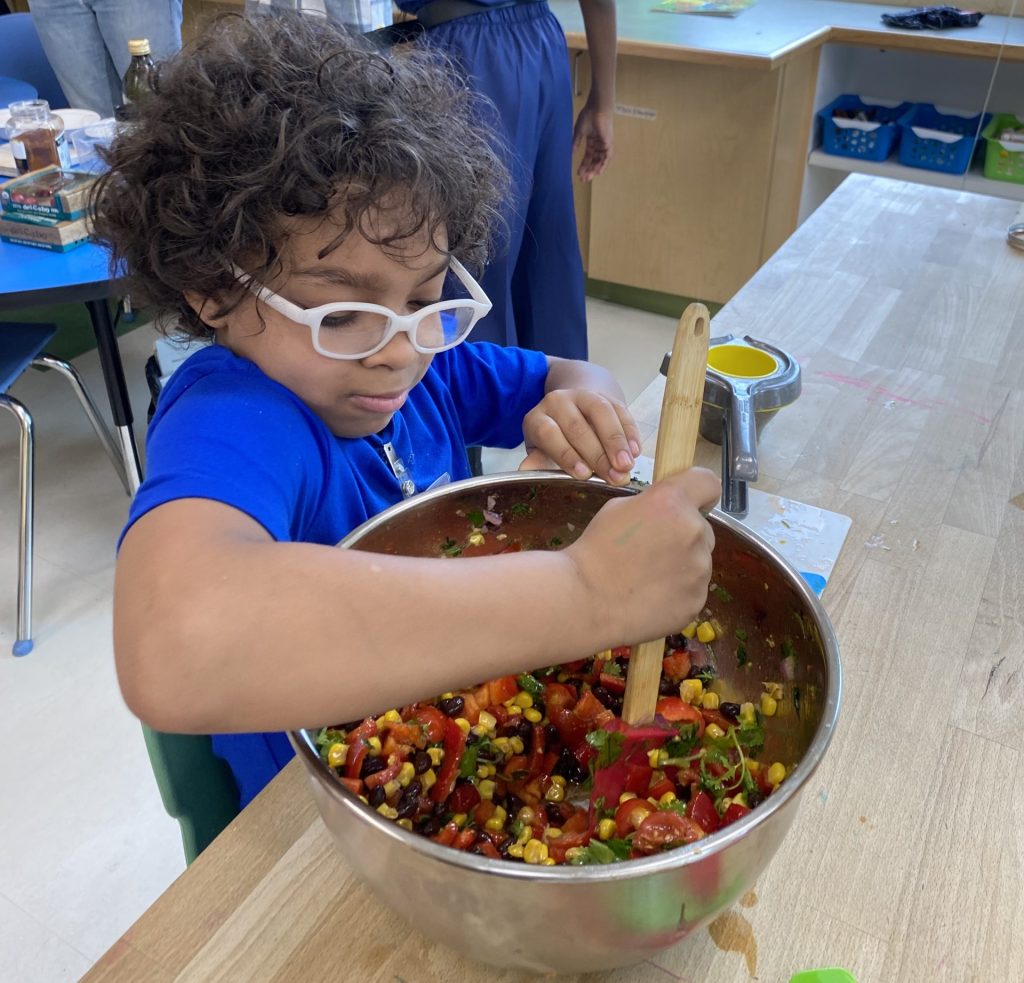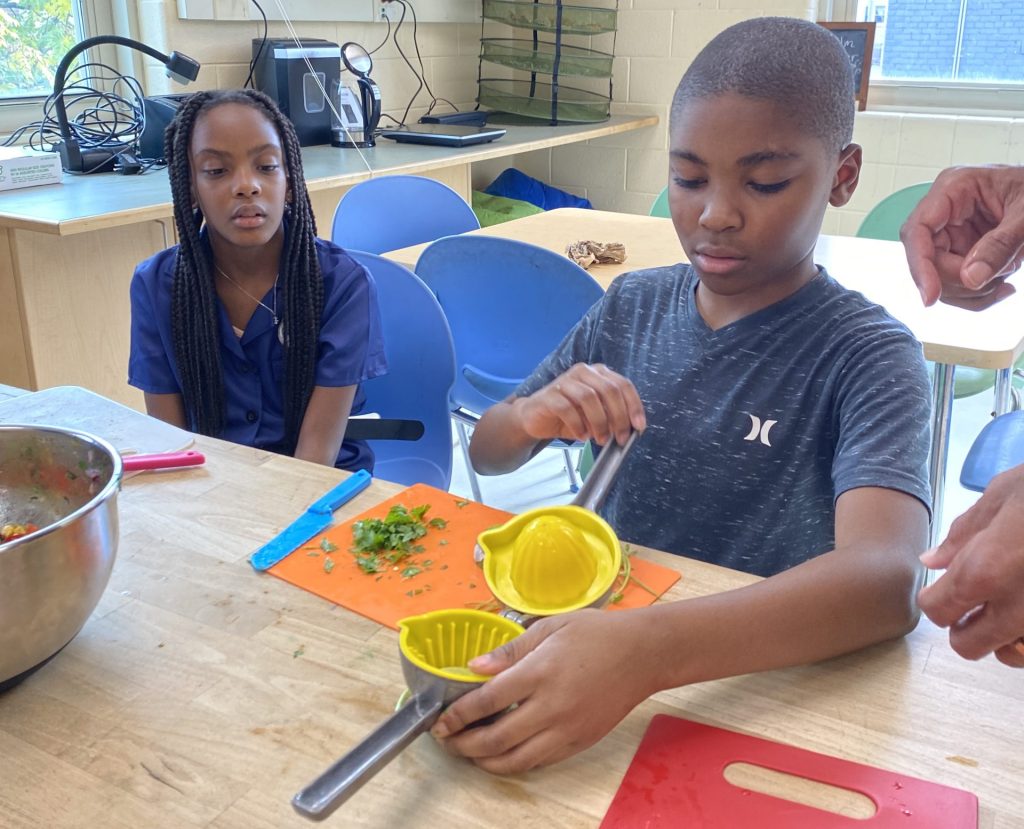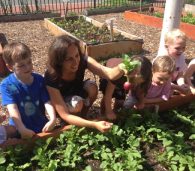Inclusive and Flexible FoodPrints Lessons Shine at Miner Elementary

As a FoodPrints Assistant Teacher, I am proud to share that the lessons in our comprehensive FoodPrints Curriculum are inclusive and flexible for students across grade levels, language learning spectrums, and special education classes. The FoodPrints curriculum is purposefully designed so that all students can learn in FoodPrints, and feel joy and comfort in our classrooms.
our comprehensive FoodPrints Curriculum are inclusive and flexible for students across grade levels, language learning spectrums, and special education classes. The FoodPrints curriculum is purposefully designed so that all students can learn in FoodPrints, and feel joy and comfort in our classrooms.
A New FoodPrints School: Miner Elementary
I recently visited one of our newest school partners, Miner Elementary, to work with a class of CES — Communication and Education Support students. The students were engaged in our lesson, Cooking with Independence, where we learn about how following directions are a vital part of the cooking process. This class demonstrated to me how FoodPrints is an inclusive space for all learners to connect to the curriculum and each other. For example, during the cooking portion of class, Miner FoodPrints teachers, Ms. Emma and Mr. Daryl led the CES students through making Black Bean & Corn Salad.
Flexibility Creates Inclusive Learning
Mr. Daryl held up a strainer to the class and asked, “What do we think this is?” Students identified the strainer and cooking tools, using memory, association, and hands-on observation to identify these items at their own pace. One student was very interested in the strainer, so he strained the beans and corn for the class salad. Another student was a little hesitant to cut cherry tomatoes because of their small size, but after watching his classmates do it, he gave it a try himself. These moments of inclusivity in the FoodPrints classroom allow students to honor their emotions, while giving them a safe space to challenge themselves, if they feel up to it.
In addition to planning inclusive and flexible FoodPrints lessons inclusive for individual students’ needs, our teachers are able to differentiate lessons for the unique needs of different classes. Every group of students in a school has a different dynamic, meaning the same lesson can look different for various classes and grades. During the CES class, a non-verbal student was very confident in his cutting skills, he then demonstrated to the other students how to cut tomatoes and pepper for their salad. We find that FoodPrints lessons are crafted in a way in which many options can be given and the Big Idea of the lesson is still conveyed and students leave class with new information and skills!
Creating a Safe Environment
Every single FoodPrints student knows that they never have to eat anything we cook in class. Students are allowed to say no thank you, not eat their entire plate, or even just give something a small bite and decide it’s not for them. In our classroom, we give students opportunities to have autonomy over their food choices and honor their comfort levels with different types of food. I noticed that students who said no thank you to tasting the recipe felt comfortable exploring the dish by smelling and naming how many colors they saw on their plate. This positive environment allows for students to feel safe, be themselves, and develop preferences for foods they may have once had an aversion to at their own pace.
The FoodPrints Curriculum is inclusive, flexible, and creates a safe environment for all types of students to learn, cook, and eat. Whether we are cooking or exploring the garden, our lessons can be adapted to meet students’ needs.

